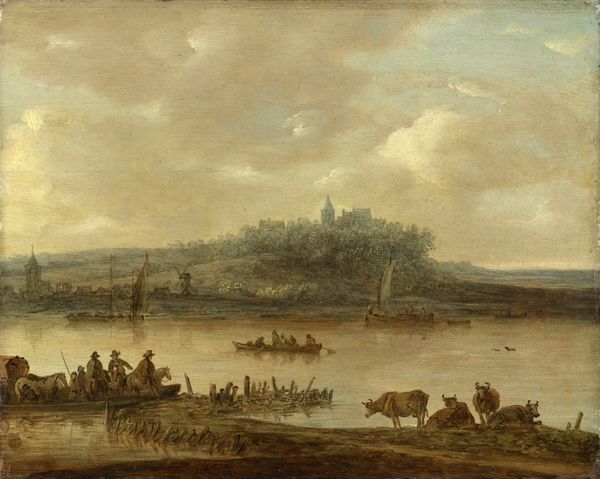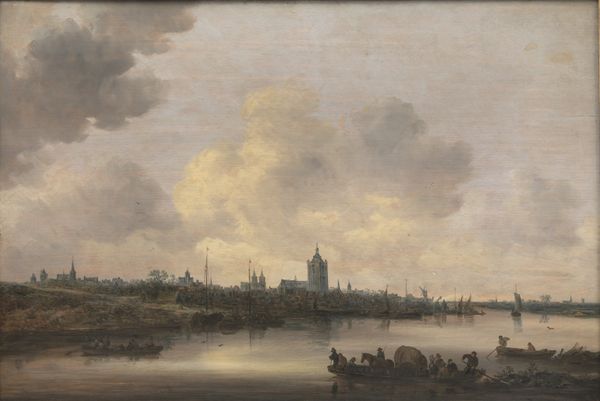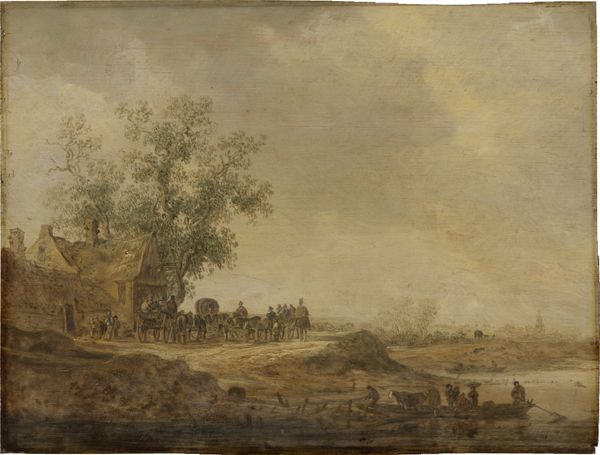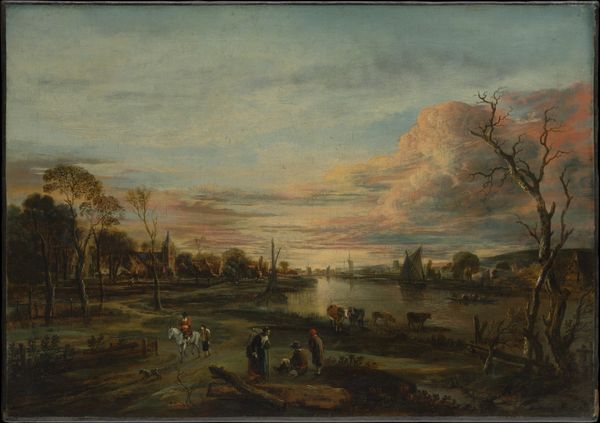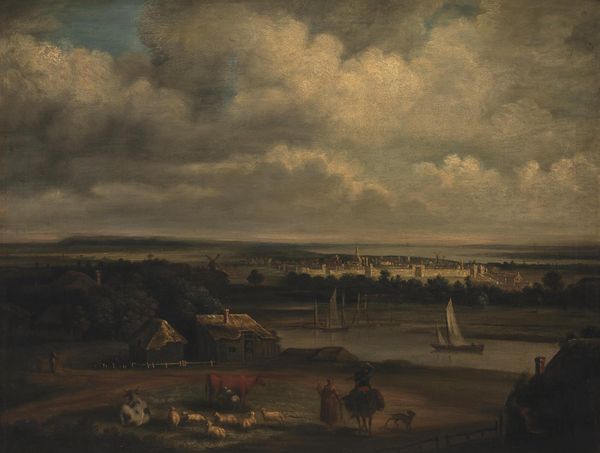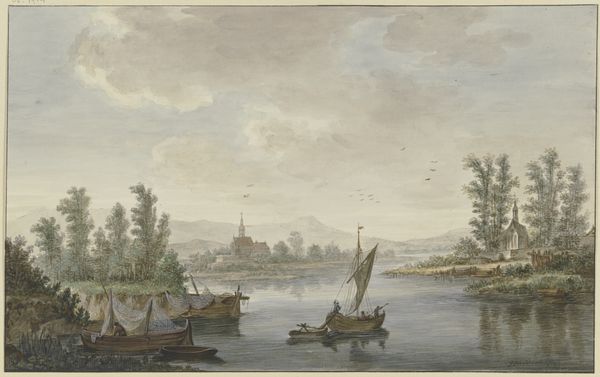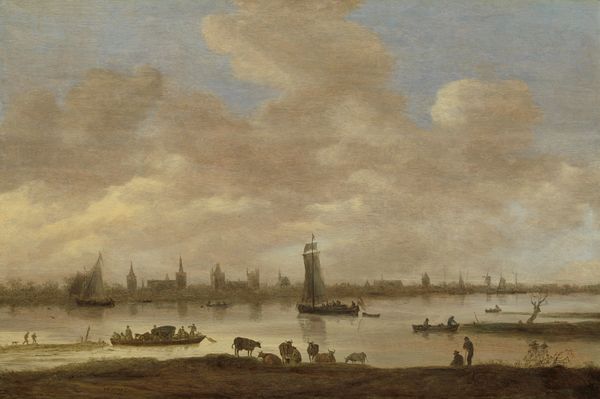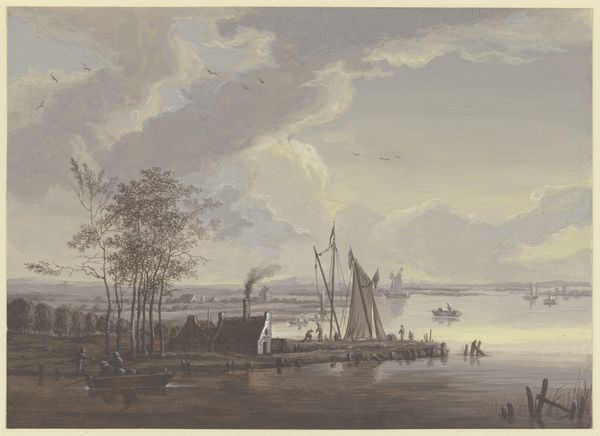
painting, oil-paint
#
baroque
#
dutch-golden-age
#
painting
#
oil-paint
#
landscape
#
river
#
watercolor
#
realism
Dimensions: support height 21.3 cm, support width 30 cm, frame height 29 cm, frame width 37.7 cm, sight size height 20.9 cm, sight size width 29.6 cm
Copyright: Rijks Museum: Open Domain
Editor: So, here we have Jan van Goyen’s "Panoramic View of the River Spaarne and the Haarlemmermeer," made sometime after 1644. It’s an oil painting, and immediately, the sky just grabs me. It feels like you could reach out and touch those heavy, water-laden clouds. What strikes you about this landscape? Curator: Well, I immediately think about the materiality of it all. The pigments available to van Goyen, sourced from the earth and processed through laborious means, dictated the muted palette. Consider the social context, too; this wasn’t just landscape for aesthetic pleasure. This represents reclaimed land, a massive engineering project of the time. Editor: Reclaimed land? So, you’re saying the very ground we’re looking at is the product of labor? Curator: Precisely. The Dutch Republic's wealth was inextricably linked to its relationship with water. The construction of dikes and polders was intensive labor. Now look at the windmill. How were the wooden supports made? How did they grind the materials into oil? Editor: Wow, I hadn't thought about the sheer effort behind even the simplest elements of the painting. Curator: And those boats...each one constructed, maintained, and operated by skilled laborers navigating these newly controlled waterways. Consumption and production are intertwined here, quite literally. What does that windmill *do*? Editor: It paints a totally different picture when you look at it through that lens. Suddenly the landscape feels less like a serene vista and more like a record of intense human intervention. Curator: Exactly. The raw materials, the labor, and the socio-economic structure are not separate from this artwork, they *are* the artwork. It changes your interpretation, doesn’t it? Editor: It really does! I was focusing on the atmospheric quality, but understanding the means of production makes it a much richer, more complex image. Thanks for pointing that out.
Comments
No comments
Be the first to comment and join the conversation on the ultimate creative platform.
